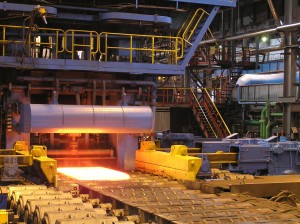 In our ongoing series of posts highlighting companies that have taken extra steps to satisfy Occupational Safety and Health Administration (OSHA) safety requirements in their Voluntary Protection Programs (VPP), a cooperative program that recognizes employers and employees who proactively prevent worksite injuries and illnesses, here we look at Clow Valve, a subsidiary of McWane, Inc.
In our ongoing series of posts highlighting companies that have taken extra steps to satisfy Occupational Safety and Health Administration (OSHA) safety requirements in their Voluntary Protection Programs (VPP), a cooperative program that recognizes employers and employees who proactively prevent worksite injuries and illnesses, here we look at Clow Valve, a subsidiary of McWane, Inc.
Since 1926, Clow Valve has been recognized as one of the country’s leading and most experienced manufacturers of ductile iron pipe. The company’s machine shop and metal casting facility in Oskaloosa, Iowa, manufactures fire hydrants and water valves. The metal casting facility produces gray iron, ductile iron and brass castings for valves and hydrants.
Even after decades of safety efforts – including written safety programs, training, machine guards, lockout/tagout programs and more – Clow Valve was experiencing incident rates above the national average for its industry. In 2005, the company overhauled its safety programs to incorporate core VPP elements. In 2007, Iowa OSHA’s VPP team conducted a nine-day VPP onsite audit, and Clow Valve’s metal casting facility achieved VPP Merit status.
Clow Valve’s work with on-site consultation and participation in the Iowa VPP resulted in improved workplace safety, health performance and other benefits. For instance, the metal casting facility reduced its incident rates to below the industry’s national average, and employee turnover rates fell from 89 percent in 2000 to 13 percent in 2010.
Today, commitment to safety and health is part of the company’s culture, with employees engaged and taking ownership of safety. Clow Valve is now an advocate of OSHA cooperative programs, such as VPP, and mentors other facilities seeking to enter the VPP process.
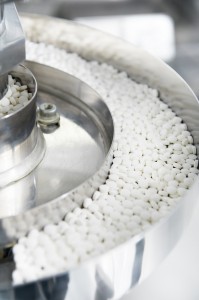 Within all aspects of pharmaceutical manufacturing operations, maintaining a rigorous level of quality assurance is of critical importance. Urging greater focus on contractor quality, the United States Food and Drug Administration (FDA) issued new guidance in May that provides specific strategies for manufacturers to ensure drug quality from third parties.
Within all aspects of pharmaceutical manufacturing operations, maintaining a rigorous level of quality assurance is of critical importance. Urging greater focus on contractor quality, the United States Food and Drug Administration (FDA) issued new guidance in May that provides specific strategies for manufacturers to ensure drug quality from third parties. Innovation is fast becoming a top strategic priority for a majority of companies today. While the notion that innovation drives prosperity is not new, it’s important to remember that innovation should not be considered an end in itself but rather an ongoing process that adds continuous value.
Innovation is fast becoming a top strategic priority for a majority of companies today. While the notion that innovation drives prosperity is not new, it’s important to remember that innovation should not be considered an end in itself but rather an ongoing process that adds continuous value. Beyond a sense of restoring national pride, the recent resurgence of American-made goods makes economic sense again for manufacturers in the United States. Today, as economic conditions drive many overseas manufacturing operations back to the U.S., a new film explores the history of American manufacturing and its impact.
Beyond a sense of restoring national pride, the recent resurgence of American-made goods makes economic sense again for manufacturers in the United States. Today, as economic conditions drive many overseas manufacturing operations back to the U.S., a new film explores the history of American manufacturing and its impact.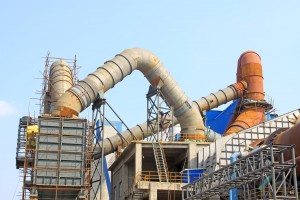 Grain dust is highly combustible and can burn or flare up if enough becomes airborne or accumulates on a surface and finds an ignition source. To help reduce or eliminate accumulations of ignitable dusts inside a plant or facility, industrial vacuums are the ideal solution for efficient and effective cleaning.
Grain dust is highly combustible and can burn or flare up if enough becomes airborne or accumulates on a surface and finds an ignition source. To help reduce or eliminate accumulations of ignitable dusts inside a plant or facility, industrial vacuums are the ideal solution for efficient and effective cleaning. Limited Lifetime Warranty – Any industrial vacuum should come with a limited lifetime warranty. Purchasing a vacuum system is a long-term investment decision, which is why it is important to get a manufacturer’s warranty giving you the assurance and long-lasting protection in the product you are buying. It marks the manufacturer’s unwavering commitment to quality that lasts.
Limited Lifetime Warranty – Any industrial vacuum should come with a limited lifetime warranty. Purchasing a vacuum system is a long-term investment decision, which is why it is important to get a manufacturer’s warranty giving you the assurance and long-lasting protection in the product you are buying. It marks the manufacturer’s unwavering commitment to quality that lasts. DeMarco Industrial Vacuums like many other manufacturers have a long history of making revolutionary advancements in products and processes to improve efficiency, quality and safety. In an effort to showcase innovation in manufacturing, over the coming year, we will be highlighting companies that are making strides to increase innovation, quality, and productivity.
DeMarco Industrial Vacuums like many other manufacturers have a long history of making revolutionary advancements in products and processes to improve efficiency, quality and safety. In an effort to showcase innovation in manufacturing, over the coming year, we will be highlighting companies that are making strides to increase innovation, quality, and productivity. The Rolls-Royce@NTU Corporate Lab is located at Singapore’s
The Rolls-Royce@NTU Corporate Lab is located at Singapore’s  Yet labor costs are only part of the picture, according to
Yet labor costs are only part of the picture, according to  Companies that believe workplace safety planning should be proactive rather than reactive address the safety of their employees before dangerous incidents occur and beyond only what the law mandates. In the first of a series of blog posts highlighting companies that have taken extra steps to satisfy Occupational Safety & Health Administration (OSHA) safety requirements in their
Companies that believe workplace safety planning should be proactive rather than reactive address the safety of their employees before dangerous incidents occur and beyond only what the law mandates. In the first of a series of blog posts highlighting companies that have taken extra steps to satisfy Occupational Safety & Health Administration (OSHA) safety requirements in their 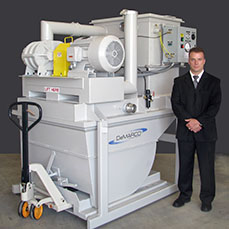
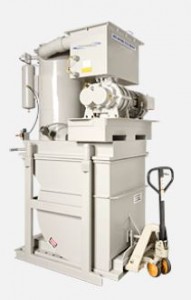 At DeMarco, we understand the importance of purchase options. We realize that, even as the economy continues to recover, limited resources are still causing many sourcing professionals to do more with less. We also believe an industrial vacuum is a sound investment, helping to ensure a safe workplace and a prosperous and efficient business.
At DeMarco, we understand the importance of purchase options. We realize that, even as the economy continues to recover, limited resources are still causing many sourcing professionals to do more with less. We also believe an industrial vacuum is a sound investment, helping to ensure a safe workplace and a prosperous and efficient business.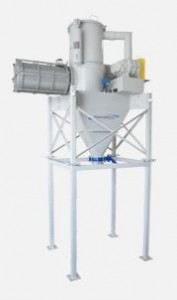 With our “remanufactured” option, DeMarco Industrial Vacuum Corporation will rebuild any DEMARCO industrial vacuum to “Like New” condition at affordable pricing. All remanufactured vacuums come with our 2-year DEMARCO Rebuild Warranty.
With our “remanufactured” option, DeMarco Industrial Vacuum Corporation will rebuild any DEMARCO industrial vacuum to “Like New” condition at affordable pricing. All remanufactured vacuums come with our 2-year DEMARCO Rebuild Warranty.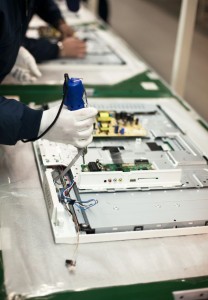 Did you know that the desired cleanliness level for integrated circuit manufacturing is
Did you know that the desired cleanliness level for integrated circuit manufacturing is  In electrical and electronics industries, where cross-contamination and the collection of ultra-fine particles is a key concern, the ideal industrial vacuum should utilize a HEPA filtration system, which removes 99.7 percent of particles that have a size of 0.3 microns, and they keep contaminants from re-entering the air supply. Because maintaining clean-room standards requires proper cleaning of all floors and surfaces, the HEPA-filtered vacuum should meet stringent standards in collecting and retaining microscopic particulate that can damage the most sensitive electronics equipment.
In electrical and electronics industries, where cross-contamination and the collection of ultra-fine particles is a key concern, the ideal industrial vacuum should utilize a HEPA filtration system, which removes 99.7 percent of particles that have a size of 0.3 microns, and they keep contaminants from re-entering the air supply. Because maintaining clean-room standards requires proper cleaning of all floors and surfaces, the HEPA-filtered vacuum should meet stringent standards in collecting and retaining microscopic particulate that can damage the most sensitive electronics equipment.